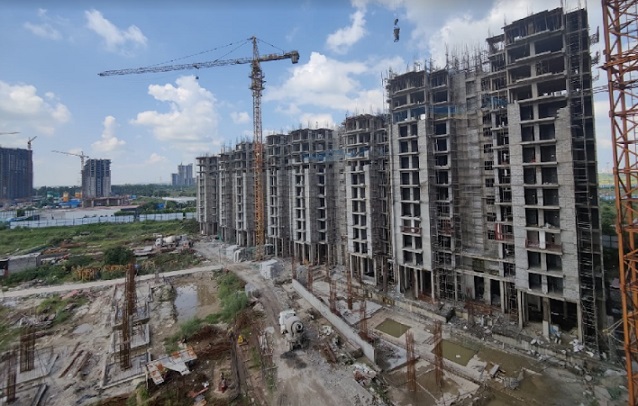
The ultra-rich Indians and foreign investors continue to be significant contributors to India’s realty sector’s growth. A report by Knight Frank highlights that about 29% of India’s ultra-high-net-worth individuals (UHNWIs) purchased a residential property in 2021. The report also shows that the foreign capital flow into Indian real estate jumped over three-fold to USD 23.9 billion during the 2017-21 period as compared to the previous five years which is a quite promising sign.
 |
Surge in investment sees boost in India’s realty sector
A Reuters poll conducted recently reflected a quick rise in house prices in the coming months as the nation recovers strongly. Homebuyers are constantly stepping ahead to invest in their dream homes owing to the factors like well-being, future security, comfort, and higher ROI. Additionally, pandemic-led trends such as the hybrid work model and homeschooling have increased demand for bigger customizations across locations including tier-2,3 cities.
Mukul Bansal, Director, Motia Group says, “There has been a significant shift witnessed in attention to tier-2 and tier-3 cities, places offering huge potential with relatively affordable pricing as compared to metros. Tech-enabled smart homes, extra rooms, modern kitchenettes, safety features, dedicated study rooms, gym, balcony are now important features of the buyers’ checklist. Owing to ample options available, green environment, affordability, Chandigarh has emerged as one of the most preferred options amongst homebuyers.“
Talking about residential real estate sector becoming the most preferred investment choice of buyers and investors, Santosh Agarwal, CFO & Executive Director, Alpha Corp says, “This sector carries huge benefits and opportunities such as stability, future security, assured returns etc, and is now attracting homebuyers who are planning for a secured future and hassle-free living. The opportunities for real estate development in tier II cities are huge. Today, these locations enjoy upgraded transport facilities, metro networks, as well as business and job opportunities. Additionally, affordability, infrastructure development, better loan rates, connectivity and rising business opportunities are also pushing the homebuyers towards these emerging locations. Going forward, investment in real estate assets in emerging locations will be highly rewarding for homebuyers and investors in these highly balanced markets, for a stable future.
With COVID fear withering away, companies have started to bring back their workforce to offices. According to an industry report, gross absorption in office space is expected to touch 45-47 million sq. ft. in 2022, a growth of about 13-14% from 2021.
Abhishek Pandey, Vice President-Customer Engagement & Distribution, Viridian RED says, “The Grade A office space is witnessing healthy growth over the last couple of quarters. Leasing activity is set to increase with rising demand from tech firms, BFSI, manufacturing, startups, and boutique firms. Amidst rising prices, the companies are now changing their approach to flexible office spaces and the inclination is widely due to the benefits these spaces entail like shorter tenures, low capital investment, facility management, security, and low maintenance. Today, there is a strong entrepreneurship wave in the country, and infrastructure upgrades, technology advancements, and ease of doing business have positioned India as a global startup leader. This growth has led to a domino effect and the demand for flexible office spaces is on a monumental rise.”
The trend is widely reflected in industry reports and as per JLL, the current market share of flexible workspaces in total office space stands at 3 percent and this is expected to go up to 4.2 percent by 2023.
The sudden attraction, experts say, is fuelled by rising disposable income, a shifting mindset towards concrete investments, and the increasing influx of high-net-worth individuals into the property space.
The opportunities in the Indian real estate sector are massive and NITI Aayog expects that the realty sector will reach a market size of USD 1 trillion by 2030 and will account for 13 percent of India’s GDP by 2025.
